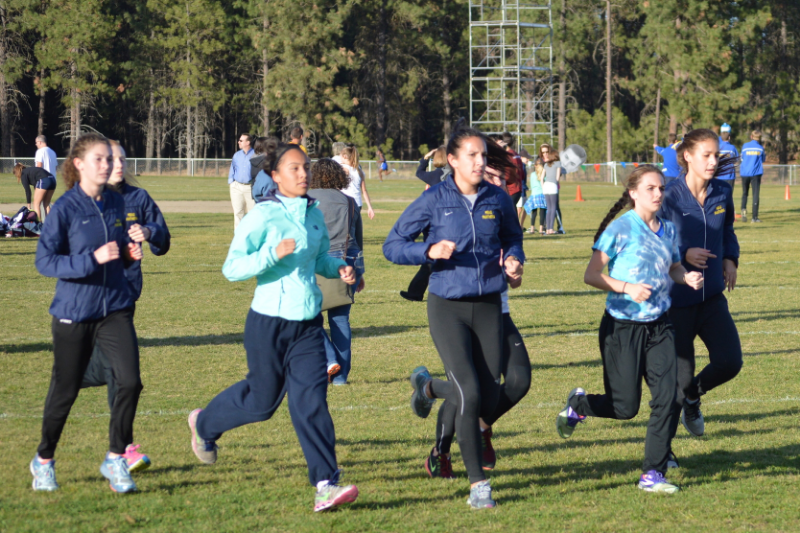News broke this week that Marathon and Beyond will cease publication after it issues its December 2015 edition. The magazine occupied an interesting niche in the marketplace, opting for long-form articles that delved more deeply into the subject matter - whether it was a particular marathon or training story - than the quick blurbs that appear elsewhere. The reason editor Richard Benyo offered was the transition in the readership from a print-based clientele to the digital consumer. While they still maintained a core of people who loved the magazine, the total numbers eroded year-by-year to the point where the magazine was no longer a viable business concern.
They aren't alone in feeling the pinch. Last year, Running Times, my favorite magazine, announced that they were cutting their offering from ten issues per year to six. Even Runner's World is cutting, going from twelve to eleven this year.
To anyone watching the state of American newspapers, or the rise of indie publishing, this comes as no real surprise, though it is sad. The magazines, as with the newspapers, have yet to figure out how to fully monetize their content. Indeed, by publishing their content to the websites, often within days of the print version arriving at the subscriber's home, they actively devalue their business.
“We feel its [Marathon and Beyond] decline can be attributed to the move (especially among younger runners) to digital formats while at the same time the traditional long attention span of the running demographic has been undermined by new media,” Banyo wrote to Runner's World.
The digital formats share several things in common. First, and most importantly to the readers, it is free. Why should they wait for a print copy that they eventually will throw away, when they can have the same information, plus save ten bucks a year? Efforts at establishing firewalls work only when the content is so unique that readers willingly pay for it. In the case of the running mags, they don't have that quality. Much of the material that they publish is regurgitated from past issues. Want to know how to run a faster 5K? Google it (or Bing, which is what I use) and you get 18 million results. The best nutrition for a runner? 8 million, with two of the top ten linking to Runner's World articles. Which leads us to the second problem . . .
The internet is forever. All those articles will be there long after the magazines fail. In fact, it's fun to compare articles from five years ago to today's - the similarities are striking. When the magazines turned over subscriber bases, they did so on about a two year cycle, making it advantageous to rerun the same types of articles because the newest readers would not recognize the repetition. That's no longer the case.
Another part of the M&B statement interested me: that the attention span of the newest readers degraded to 140 characters. This leads to quick 250 words bits of fluff that do little more than announce a study or give a headline. At the websites, you can see the transition to this in the manner that they lay out the articles. A picture, a headline, one sentence of information. I would love to know the click-through rates.
None of this is good news for the running magazines (and they aren't alone.) For books, though, the dynamic is different. The disintermediation that is taking place makes it more advantageous to write books, especially those that approach the subject from a different angle.
Thus, we see more memoirs of runners appearing, from Nick Symmond's Life Outside the Oval Office to Rand Mitzner's Thirty-three Years of Running in Circles to Dave Clark's Out There. In Running: A Long-distance Love Affair, Shawn Hacking added the sound track to follow the story. JOCK: a memoir of the counter-culture, by Robert Coe, puts the history of the sixties into the context of his running career at Stanford.
Jack Welch put together a collection of his work from Running Magazine in When Running Was Young and So Were We, as we take a look back at the golden era of American running.
There's always been a wealth of how-to's in running, but I wonder how much longer they will continue without any real changes in the underlying science. Some will continue to proliferate, mostly on the basis of athlete celebrity, but with the same information available for free, the need for them diminishes by the day.
In the fiction category, we see a little movement, too. There are, of course, my two books and more on the way. Bill Kenley put out High School Runner: Freshman. John Parker put out the wonderful Racing the Rain to complete the Quenton Cassidy saga.
While it looks bleak for the magazines, the future seems bright for authors of longer works. I've queried a dozen magazine for articles from Kenya, with no replies. While it would be nice to have a paying gig while I'm there, the raw material for the articles (there were about four different takes on Kenya that I wanted to explore) can still be used for a book or two. Plus the fiction that I'll generate from the trip.
I'm sad to see M&B go, but the running world will still have its own literature. It might be tweet length and book length with little in-between, but as long as there are runners who are also creators, we'll find a way to communicate.

![IMG_20151110_143614[1].jpg](https://images.squarespace-cdn.com/content/v1/5300251fe4b0056790cc068c/1447203428680-J07I7P5GYBKDX2J6MN6T/IMG_20151110_143614%5B1%5D.jpg)

























